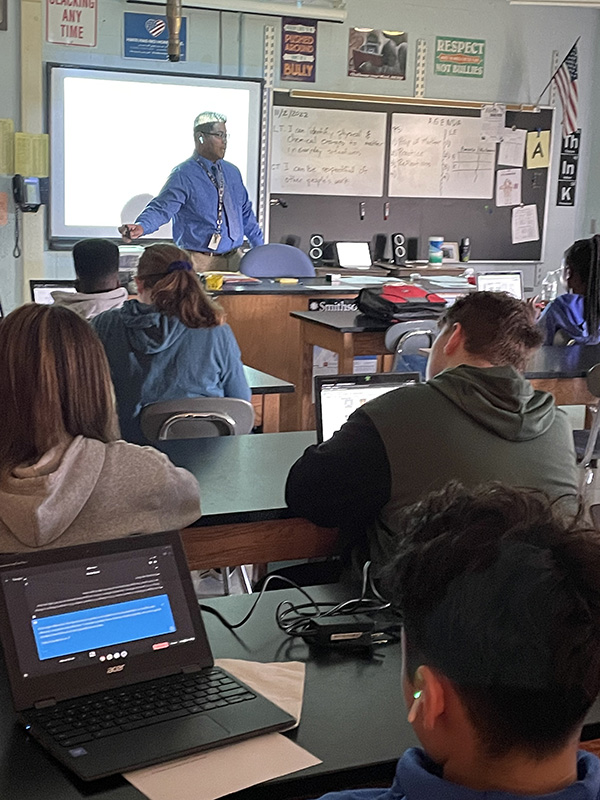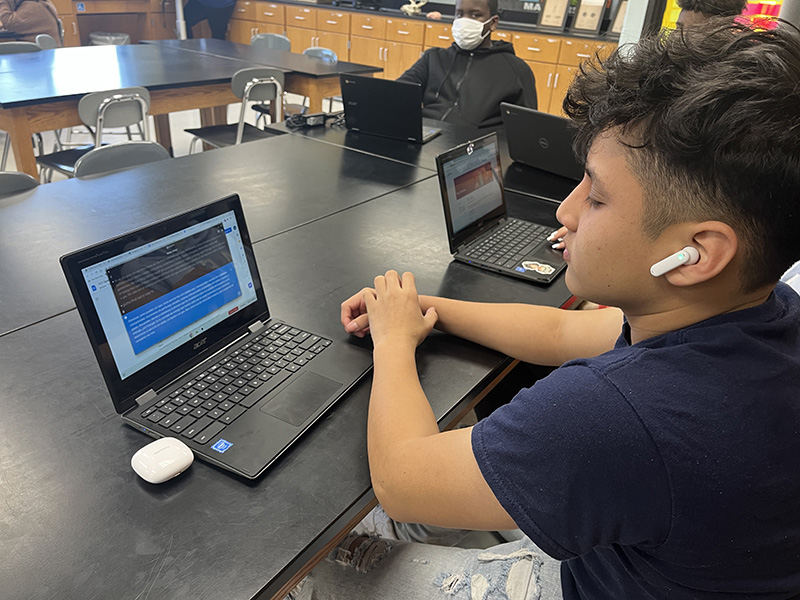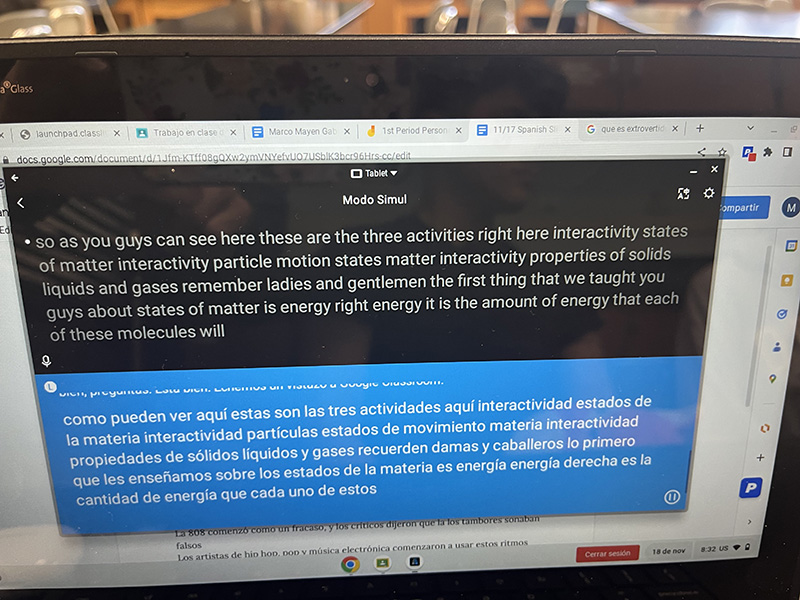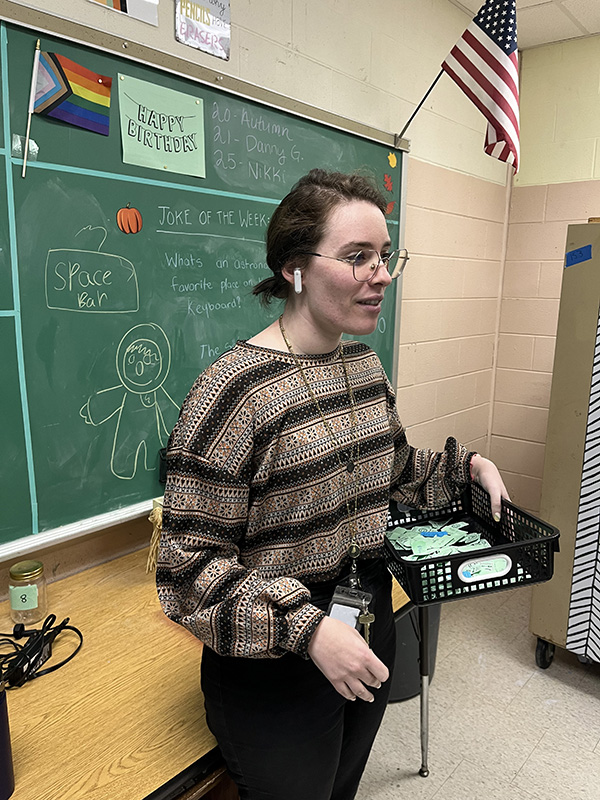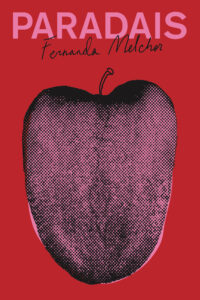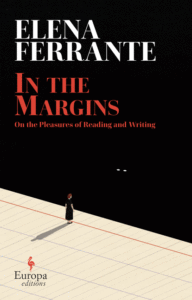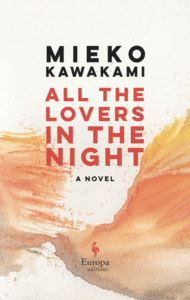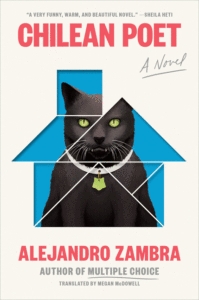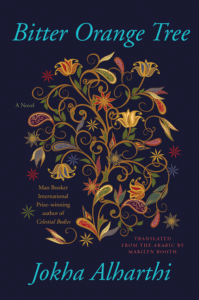Coming to college — especially to a place like Harvard — can be a difficult transition. The lectures are faster and the essays are longer. Many of us must learn how to live with roommates for the first time. Adjusting to HUDS is a feat of its own.
But there’s also that quintessential freshman feeling of not having a clue what everyone around you is talking about. Who’s getting punched, and are they okay? Who spelled “LGBTQ” wrong on this office door? What’s a “comp,” and why am I being yelled at to do it outside of Annenberg?
Strange acronyms litter our vocabulary. When speaking with family or friends back home, we spend an extra 10 minutes translating “Harvard speak” into regular terms while telling a simple story. So we set off to compile an (un)official Harvard dictionary for the uninitiated.
We were also determined to answer an age-old question: Why do Harvard students talk like that?
To do so, we distributed a survey to the entire College, asking current students about their linguistic habits — with questions like “What do you think ‘comp’ is short for?” and “How many hours of work should a ‘gem’ require?” — and received 400 responses, unadjusted for possible selection bias. We also combed through old Crimson articles, personal correspondence, and archival records.
It became increasingly clear that the answer would not be simple. As with any other language, each Harvard term or phrase has a complex backstory that reveals something about campus culture.
Fiona McPherson, a senior editor for the New Word team at the Oxford English Dictionary, believes that words are an ever-evolving tool which merely reflect the ever-evolving people who use them. “Language will change, and the words which will come into use — also the words which will die out of usage in some way — has often got a lot to say about the state of the world,” she says. “What’s happening in the world, and also what our views are, and what is preoccupying us.”
Language shapes our reality and shapes us. So whether you still insist on the word “major,” are a die-hard “concentration” user, or tend to match the vibe of your audience, these 15 Harvard words tell an important story about who we are, who we choose to become, and where we’re going.
Pronouns
In the standard first-day-of-class introduction that includes your name, class year, and field of study, it’s become commonplace for students to add their personal pronouns. But our survey respondents reported phrasing that introduction in different ways, from “My pronouns are ___” to “I use ___” to “I go by ___.” This linguistic variation would not in itself be a problem, if our peers at other schools did not find some variants particularly strange — outrageous, even.
“Today i learned people at Harvard take pronouns,” a Yale student tweeted in March. “never before in my life have I heard the phrase ‘i take the she series’. instant psychic damage.”
In the Twitter discourse that followed, students from other schools mocked our habit of saying we “take” pronouns (“personally I borrow my pronouns,” one user wrote) as well as our use of pronoun “series” (“HUHHHHH!!?!?!? this is crazy??? series??” wrote another).
These syntactic quirks certainly cause confusion, but Harvard does not appear to be alone. While our survey respondents were far less likely to have heard the “I take the ___ series” phrasing before coming to college (compared to more popular variants like “My pronouns are ___”), almost a fifth of students reported they had heard it before.
Part of the variation may arise from the phenomenon’s recent institutionalization. Harvard only started allowing students to indicate their pronouns on their student records in 2015. No single standardized way of introducing pronouns exists yet, and certain formulations may have unintended connotations — making “series” the norm, for example, may exclude people who use multiple pronouns, like she/they.
We do have proof, however, that we aren’t as crazy as Yale students might have us believe. A Tufts University Office of Equal Opportunity website mentions pronoun series, and in a 2015 Oberlin College newspaper op-ed, one student defended her use of “I take she/her” by distinguishing it from “I prefer she/her”: “It’s not a matter of what I would rather.”
“Let’s get lunch!”
We’ve all been there: a passing conversation with someone in that gray area between acquaintance and friend. After the usual pleasantries, an awkward silence looms. Confronted with this impending horror, you blurt “let’s get lunch sometime!” or “we should totally grab a meal soon.” The other person agrees, equally relieved, and the conversation ends. Phew.
In a 2010 FM article, one student called the trite invitation “a classic evasion tactic.” Without seeming harsh or unfriendly, “you walk away commitment-free.”
The cheeky duplicity of the phrase now serves as a joke for editorials, blog posts, and even a flowchart in The Crimson’s blog titled “Will You Ever Actually ‘Grab a Meal Sometime’?” In 2020, one disgruntled freshman lamented how “let’s get lunch” had become “a nicety at best, and a symbol of everything wrong with social life on campus at worst.” In her view, many hyper-ambitious students develop a “fear of free time” that makes it difficult to have spontaneous social interactions. They want to keep up the appearance of friendliness without having to give up a precious slot on their Google Calendar.
As a result, both parties walk away from the lunch invitation unsure of its sincerity. On our survey, when asked to rate how likely they were to actually get lunch with someone after using the phrase, students were almost equally as likely to answer “we will never have lunch together” as “we will definitely have lunch together.” A plurality (34 percent) chose the middle option, completely ambivalent.
So the next time someone tells you “let’s get lunch,” a more statistically accurate response than the typical enthusiastic agreement would be “maybe, maybe not.”
The House system, a beloved staple in residential life at the College, was created in the early 1930s by former University President Abbott Lawrence Lowell, Class of 1877. Before the construction of the nine River houses, three Radcliffe Quadrangle houses, and the Dudley Co-Op, housing at Harvard was limited to Yard dormitories in shoddy condition.
A 1995 housing pamphlet describes how in the 1800s, “Student rooms were often spartan affairs, and two students sometimes shared a single bed.” Harvard economist Seymour E. Harris, Class of 1920, reported that “in 1856, Henry Adams complained of winds howling about him in his college room. No heat attainable could prevent the water in his pitcher from freezing inches deep in cold weather.”
As a result, in 1876, private developers began cashing in on wealthy students by constructing opulent apartment buildings that were referred to as “Gold Coast” dormitories around Mount Auburn St. This inevitably led to a sort of “freshman flight” as wealthy students were able to move off-campus, while their poorer classmates remained in the Yard.
Lowell put a stop to this by requiring all freshmen to live on campus, which ultimately led Gold Coast dorm owners to sell their property to the University. Lowell also envisioned a collegiate experience that centered both living and learning for all three upper class years, modeled off the dormitory systems at Oxford and Cambridge University. Writing in 1958, he explained, “The Houses are designed to help substitute for the schoolboy attitude of mind — which has dominated so much the American college — a type of life more mature and, when understood, more enjoyable.”
He made this dream a reality with the construction of Dunster and Lowell Houses in 1930, then Eliot in 1931. The original Gold Coast dorms became Apley Court, Adams House, and surrounding apartments.
But the fact still remains that we don’t move into dorms or halls or even residential colleges in sophomore year, but a house. We must explain to our family and friends that we are not actually signing a lease on a rental house with our roommates — merely living in non-freshman dormitories.
Calling upperclassmen dorms “houses” most likely hails from the word’s original usage to refer to Harvard College as a whole. According to historian Samuel Elliot Morison in his 1936 book“Three Centuries of Harvard,” paying tuition made one a “member of the House, as Harvard College was familiarly called.”
Just think: Back in the 19th century, the Harvard intro could’ve included identifying your year at “the House,” not the College.
Quad
For Harvard freshmen in their spring semesters, there is no single word that provokes greater fear than “Quad.” Getting “quadded” — that is, placed in Cabot, Currier, or Pfoho on Housing Day — dooms you to a life of mile-long winter walks to class, hours spent decoding the shuttle schedules, and, worst of all, pitying smirks from your riverfront peers. (Though rest assured that many students also enjoy the Quad’s close-knit community and more spacious dorms). For better or for worse, the distance between the Quad Houses and their River siblings is stark, and it’s no accident.
Before it was the Quad, it was a different school entirely: Radcliffe College. Students in the small women’s college, founded in 1879, lived in dormitories around a grassy quadrangle. Radcliffe gradually merged with Harvard over the course of decades. Starting in 1943, Radcliffe students could take classes at Harvard. In 1972, amid the growing popularity of co-ed schools like Yale and Stanford, Radcliffe students began living at Harvard (and vice versa).
Even after the Quad dorms were incorporated into Harvard’s House system, the Radcliffe name lingered for a few more years. Rather than getting quadded, students (including some freshmen) lived at “The ’Cliffe.” These “’Cliffe dwellers” lamented the distance from their peers and their quieter social life. According to a 1975 Crimson article, Cabot (then called South House) was more likely to serve “milk and cookies,” while the Yard threw “massive beer parties.”
But as the differences between Harvard and the Radcliffe Quad became less pronounced, Harvard students began to pronounce the “Radcliffe” less than “the Quad.”
Although some appreciated the serene walks to class and the luxurious Hilles Library (which became the Student Organization Center at Hilles in 2006), when freshmen ranked their housing preferences, Quad houses overwhelmingly filled the bottom slots. The first classes of quadded men, especially the athletes who had to travel across the river for practice, complained so vehemently that Harvard began offering shuttle buses to the Yard and the River houses in 1973. Over the course of the ’70s, fears about being assigned to live in the Quad molded language itself.
“Anything is better than being quadded,” one freshman told a Crimson reporter in the spring of 1980. It was the first time “quad” was used as a verb in The Crimson. At the time, the slang term must have been relatively new. Alumni we interviewed from the ’70s, including as late as the Class of ’78, had never heard “quad” used as a verb.
The change wasn’t merely symbolic. In 1974, as Radcliffe combined its athletics program with Harvard’s, all the women’s sports teams except crew chose to take on the Harvard name and leave behind Radcliffe. At the same time, Radcliffe’s student organizations and administrative offices were merging with Harvard’s.
Jane R. Borthwick ’76 initially saw it as a victory when the Radcliffe admissions office merged with Harvard’s. But later, she found it sad. As Harvard was finally opening its doors to women, its name was overshadowing the rich history and traditions they’d created for themselves. Radcliffe College was disappearing. As Borthwick wrote in an email, “with no students, how could it continue to be called a college?”
Questions about the relationship between the Quad and the rest of the College remain to this day. Last year, when Harvard began using “Harvard Radcliffe Institute” as shorthand for the Radcliffe Institute for Advanced Study, alumni protested that inserting the Harvard name would diminish the Radcliffe legacy. For many alumni, preserving the history of Radcliffe requires maintaining some distance — while students trekking back home to the Quad wish it were just a little bit closer.
Up until the early 1900s, Harvard students only needed to take any 16 classes in order to graduate. Former English professor Barrett Wendell, Class of 1877, who wanted to bring greater order to the free electives system, formed a History and Literature program in 1906 that provided a structured plan of required courses and tutorials. Three years later, President Lowell, who believed the elective system encouraged students to view academics as “an inconvenient ritual,” decided that students need “a department of major concentration.” And thus the term “concentration” was born. Students had to take at least six courses in a single department, only two of which were allowed to be introductory courses.
Brown adopted concentrations around the same time Harvard did, for the 1910-11 school year. Shortly after, two schools followed: Princeton in 1923 and Columbia in 1928. The concept of field specialization, however, wasn’t new; the University of Virginia had begun offering students a set of programs to choose from, seven in total, in 1825.
After the Civil War, specialization at American institutions rapidly developed. In its 1877-78 course catalog, Johns Hopkins University coined the terms “major” and “minor,” which became the terms most other universities adopted.
Harvard, however, stuck with “concentration,” Lowell’s original term. The University also invented a term for its “minor” analogue: secondary.
Secondaries came around at Harvard in 2006 — much later than minors did at other schools — as it became evident that students “were going through all sorts of contortions” in an effort to specialize in multiple fields, former Harvard College Dean Benedict H. Gross ’71 wrote in an email.
Still, some faculty were wary of the proposal. In 2006, Government professor and former department chair Nancy L. Rosenblum called the vote a “shot in the dark.” “I can’t tell whether this is an entrepreneurial effort by the faculty or opening a Pandora’s box,” she said in an interview with The Crimson at the time.
But after a three-and-a-half-year curricular review, members of the Committee on Educational Policy decided that they needed to introduce minors, but they needed a different name. “How could Harvard have minors when we didn’t have majors?” Gross wrote.
Eventually, English professor Marjorie Garber came up with the term “secondary fields,” according to Gross. Garber herself says she does not remember suggesting the term, though she does remember the motivation behind it.
“There was no implication that ‘second’ meant less important; to the contrary, we wanted to allow students to highlight this additional focus of their academic work, should they elect to do so,” Garber wrote in an email.
Today, Harvard offers 50 concentrations and 49 secondaries. But which fields have been able to earn concentration status has historically been fraught. Studies of Women, Gender, and Sexuality, for example, first arose as the Committee on Women’s Studies in 1978 and spent its first five years as “a loose confederation of cross-listed classes, with no power to confer degrees,” according to a 2011 FM article.
When former comparative literature professor Susan R. Suleiman became head of the Committee on Women’s Studies in 1983, she sought to change this. From ensuring they had a listing in the phonebook to writing individual letters to every member of the Faculty of Arts and Sciences, Suleiman and her colleagues fought to establish Women’s Studies as a full concentration — and finally succeeded in 1987. In 2003, recognizing the importance of expanding beyond simply Women’s Studies, the Committee took on its modern name.
Today, despite its increasing popularity, WGS still struggles to gain departmental recognition. Currently, WGS falls under Standing Committees of the FAS, meaning that it is a nondepartmental degree program. Unlike departments, these committees are staffed by professors and head tutors who run tutorials, set concentration requirements, and occasionally oversee exams and theses. Often, these faculty members are jointly appointed to other programs; it was only in 2017, for example, that WGS hired its first full-time faculty member. Becoming a department would confer on WGS stronger administrative backing and greater recognition among students and administrators.
Similarly, students have pushed for decades to establish an Ethnic Studies department at Harvard. Despite a recent FAS cluster hire of ethnic studies scholars, the school still does not have a concentration or academic department dedicated to the field. The Committee on Ethnicity, Migration, Rights — an attempt to address calls in the 2000s for an Ethnic Studies program — only offers secondaries.
Beyond simply being analogues for their more popular counterparts of “major” and “minor,” then, “concentration” and “secondary” also speak to questions about which fields the University values.
BGLTQ
Michael Bronski, a writer and activist who has been involved in queer politics since 1969, says he had never heard anyone use “BGLTQ” before he came to Harvard as a lecturer. The acronym for Bisexual, Gay, Lesbian, Trans, Queer, and Questioning students is what Harvard uses in all its official capacities, such as the Office of BGLTQ Student Life.
Yet our survey respondents much prefer the more common acronym “LGTBQ.” Nobody indicated that they use BGLTQ unless referring to Harvard-specific entities. Even the Office of BGLTQ Student Life is often called the “QuOffice” — a portmanteau of “Queer Office.” Prior to this year, The Crimson’s own style guide called for “BGLTQ” in its articles.
On the whole, students expressed confusion or annoyance about Harvard’s use of the non-standard acronym. One respondent wrote, “it’s so dumb and I hate it.” Another wrote that BGLTQ is “really just a silly, fake word.”
Why, then, does Harvard insist on BGLTQ? Is it just another pretentious quirk of the university? Surprisingly, the answer has just as much to do with students as it does with Harvard’s administrators.
Robyn Ochs, a speaker and activist who worked in Harvard’s administration for 26 years, says that when she first came to the college, “LGBTQ+ folks weren’t on the radar” of the administration — students, faculty, and staff had to force Harvard to start paying attention throughout the ’90s and early 2000s. The choice of BGLTQ, however, was by no means predetermined. By 2009, if not earlier, Quincy House had its own “LGBT” tutors.
One of the principal student organizations involved in queer activism during this time was the Bisexual, Gay, Lesbian, Transgender and Supporters’ Alliance, or BGLTSA. The name of the group was “an attempt to decenter gay men,” Ochs says, by putting the identities in alphabetical order. She recalls that it was not a common acronym at the time but rather “Harvard students making a statement.”
When at long last the Dean of the College formed a committee to begin institutionalizing support for queer undergraduates, “the administration followed the students,” as Ochs puts it. Inspired by the BGLTSA, the administration convened the BGLTQ working group in late 2010, which led to the 2012 founding of the Office of BGLTQ Student Life and its subsidiaries.
However unusual Harvard’s mixed-up letters may be, they are also a reminder of how the acronym itself, as well as the coalition it represents, is not set in stone. Bronski points to recent debates about appending I (for intersex) and A (for asexual) to the abbreviation. He also emphasizes the long history of “LGBT,” which came together one letter at a time over decades of debating and organizing.
At Harvard, everything “BGLTQ” largely came from the BGLTSA. Oddly enough, as much as undergraduates today might see “BGLTQ” as “fake” and “silly,” the acronym is testament to the power of student-led activism.
Q Guide
What does the Q stand for in “Q Guide”?
“Huh … that’s a good question,” says one student we interviewed. “Questionnaire?” Other responses ranged from “quality” to “I have no idea.”
It’s a bit of a trick question. The Q Guide, in its current form, is an online database of course evaluations and comments from the last 15 years or so, collected and displayed by the Harvard College Institutional Research Office. But Harvard course evaluations date all the way back to 1925, when The Crimson began to publish its own compilation of course reviews known as the Confidential Guide of College Courses, or “The Confi.” In 1975, in an effort to formalize the evaluations, the Committee on Undergraduate Education began printing its own CUE guide. When Harvard added graduate course evaluations to the publication in 2006, the CUE no longer controlled the system, leading the administration to rename it the Q.
To students and faculty today, the Q Guide stands for much more than “question,” “quality,” or CUE. Scores on the Q Guide — which assess student satisfaction, average workload, and professors’ performance — are a key factor in class selection for many undergraduates. A bad Q score can prompt professors to rework their entire curriculum, and a good one can bolster the career prospects of graduate teaching fellows.
But the true magic of the Q is the comments. On any given course’s evaluations, the anonymous comment section is fragmented and cacophonous — a “collaborative literary masterpiece,” as one student wrote in a 2020 Crimson op-ed. Masterpieces need not be consistent. In the fall 2019 Q report on CS50, students left comments ranging from “YOU NEED TO TAKE THIS COURSE” to “THIS IS A TERRIBLE COURSE, I HATE DAVID MALAN WITH MY ENTIRE SOUL.”
Equal parts utilitarian and chaotic, professor’s performance review and students’ performative reviews, the Q Guide defies easy answers. Who knew one letter could contain so much?
Gem
Much of the time we’re sifting through the Q Guide, we’re really just mining for gem classes. Low-stress diamonds in Harvard’s high-pressure rough, “gems” are the precious easy offerings that dot the course catalog. How easy? No clear definition exists, but 95 percent of surveyed students agreed that a gem should require less than four hours of work per week outside of class. Most went further, with 56 percent putting the standard at two hours per week or lower.
Whatever the exact threshold, students at Harvard have always tried to find light courses, though the terminology has changed. As far back as 1886, overworked undergraduates flocked to “snap courses” or “snaps” to balance out their schedules. In the second half of the 20th century, “gut” became the word of choice, indicative of relaxed assignments and easy grading that students could “eat up.”
Some guts became legends in their own right. A natural science Gen Ed in the ’60s earned the title “Rocks for Jocks,” recalled then-Dean of Freshmen Thomas A. Dingman ’67 in a 2013 Crimson article. More recently, one student in our survey noted that Stat 104 used to be dubbed “Frat 104.”
“Gem,” it turns out, is Harvard-specific and surprisingly recent. While “snap” and “gut” have become popular enough across higher education to earn their own dictionary entries, “gem” remains unheard-of outside the Harvard bubble. Perhaps that’s because the slang meaning of the word only emerged a dozen or so years ago, around 2010.
The archetypal gem is Gregory Nagy’s Gen Ed on the Ancient Greek hero. The first recorded use of “gem” in the Q Guide came in this course’s 2011 reviews. In fact, “Heroes for Zeros,” as students used to call it, has been taught for so long (almost 50 years) that it was also once the archetypal gut. When asked in an interview last month why he thinks his course has remained so popular, Nagy told FM, “I just find it has a universal appeal that withstands all the changes of cultures and upheavals of society.”
To students, though, there seems to be only one kind of change that a gem must withstand: any increase in its difficulty. This increase is usually the professor’s strategic attempt to dispel their soft reputation. In the late ’90s, the professor of “Rocks for Jocks” claimed he had changed the material so much that “anyone who thinks … it is an easy course would be in for a shock.”
In some cases, gems are victims of their own success. This year, a Gen Ed called “Sleep” became the subject of intense complaint. An October Crimson op-ed titled “Make Sleep a Gem Again” decried the addition of in-class quizzes and even a final exam to a class once known as “the gemmiest of gems.” In the writer’s view, the class has turned into “a hard, old rock.”
But accusations of sabotage are par for the course, even before the advent of “gem.” A 1990 article in The Crimson warned students that since Nagy “beefed up” the requirements for “Greek Hero,” “the one-time gut may never be the same.” Six years later, however, the class had not left its spot as the principal gut, according to The Crimson’s analysis of the 1996 Confi.
In the 2011 Q Guide, one disgruntled student grumbled that Greek Hero “had the reputation of being the ‘gem of gems’... not anymore.” However, that same year, two other classmates praised the course’s light workload in their reviews.
For all the false alarms, “Greek Hero” hasn’t stopped saving students’ schedules. When asked to list examples of gems in our survey, over 20 percent of responses included Nagy’s class.
Part of the mythology of any gem, it seems, is that it has recently gotten harder (or will soon). Ask around about a notoriously gemmy Gen Ed, and you might find rumors swirling that professors will require more reading, replace a creative final project with an exam, or (gasp) start taking attendance. But don’t take every Q review as prophecy. A gem (or gut or snap) was always easier last year.
Pset
The origins of this dreaded and beloved term, short for “problem set,” are hard to pin down. Simple searches frequently tie it to MIT, which is unsurprising given that it is “the most common unit of homework assigned here,” according to an MIT student on the university’s admissions page.
At MIT, “pset” was first used in print in a 2002 edition of the student newspaper, the Tech, by academic frats offering help on — or breaks from — psets, and the popularity of the term increased with the tech boom. By 2008, the term seemed to have also trickled up to faculty, as indicated by an article from the MIT Faculty Newsletter regarding academic dishonesty on psets. The Crimson itself first used pset in a 2009 article publicizing events for students to attend.
The term isn’t just used at these two schools, however. According to The Crimson’s survey, 40 percent of students had heard “pset” prior to coming to Harvard, and several other universities — the University of California Berkeley, Stanford, Columbia, and Princeton, among others — use the term.
Less common, however, is the verb version of pset, i.e. psetting, which survey results indicated only 19 percent of respondents had heard before coming to Harvard. First used in The Crimson in a 2013 op-ed, in which the author recalled a “wild night of psetting and reading in the Currier dining hall,” psetting stands for more than just the abbreviation of a longer term. It also represents the culture of collaboration and commiseration over STEM classes as students debate how many pset classes to take, gather for house pset nights in dining halls, and find pset buddies to work with.
Lamonster
While “Lamonster” today evokes the image of a messy-haired, baggy-eyed student pulling an all-nighter in Lamont Library, the term originally referred to a part of the building itself: Lamont Cafe. Members of the Lamont Cafe Committee began brainstorming names for the eatery just before it opened in 2006: Labrontasaurus, Stacks N Snacks, Midnight Oil, The Larry Summers Memorial Cafe, and, of course, Lamonster. In the end, however, they went with the wittiest name of all: Lamont Library Cafe.
With the establishment of the cafe came the Lamonsters as we know them now. Students had already begun frequenting the library at odd hours after it switched to a 24/5 schedule in the fall of 2005. “Now that Lamont has a café, we will never have to leave,” wrote a 2006 Crimson op-ed titled “We’ve Created a (La)Monster.”
Indeed, during the 18-day reading and exam period of fall 2011, Lamont reported 36,989 unique visits. “Lamonster” quickly became a beloved term for the “bleary-eyed and smelly beast” that is a student pulling an all-nighter, as one 2011 Crimson article put it. This year, the library played up the term by hosting its first Lamonster Mash, a Halloween celebration involving crafts and trick-or-treating. But for students, Lamonster will always refer to those cursed souls studying, eating, sleeping — and doing pretty much any other activity one can think of — in the library.
Despite the cutesy name, the Lamonster trend has an ugly side. “Leave it to Harvard students to make a student center out of a study space,” the 2006 op-ed wrote. “Lamont is not even efficient anymore, because its inhabitants are going insane.” Overworked and sleep-deprived, Lamonsters slowly lose contact with the outside world as they slog through assignment after assignment. As the author advises: “for your own sake, leave the place sometime.”
Comp
One does not simply join a student organization at Harvard. Each fall, the infamous “comp” process instills stress among the student body as overly-ambitious freshmen and upperclassmen alike vie for spots in the selective student organizations of their choice.
But membership requirements vary from club to club, ranging from written assignments to presentations to dinner socials. So what exactly does “comp” mean? Is it short for something? Is there a reason we use it instead of a more normal verb like “join”?
When asked to select all of the possible meanings for comp that they thought applied in our College-wide survey, students most frequently chose “competition,” with “completion” and “competency” not far behind. Two brave souls wrote in “compensation.”
It somewhat pains us to admit that the word finds its roots in the historically exclusive walls of our very own Harvard Crimson. An article from 1932 proudly declared the beginning of The Crimson’s annual “competition” to become a staff writer. By 1944, The Crimson’s “competition” had been shortened to a “comp,” and it had become the widely adopted shorthand for other organizations with competitive processes to join. In an informal guide written for Black freshmen by the Afro-American Students Association in 1973, an entire section is devoted to “inside tips” for comping various clubs, such as The Crimson, the Independent, and WHRB.
Today, many clubs (including The Crimson) have abandoned competitive comps in favor of completion- or competency-based requirements. But regardless of what it stands for, “comp” represents a part of Harvard’s culture that is surely here to stay: figuring out how to do regular college student things in the most extra way possible.
Punch
Arguably the most elusive word in the Harvard language, “punch” is the not-so-affectionate term used to describe the final club selection process that occurs each fall. Much like the actual process, the origin of the word punch is shrouded in mystery.
The term “final club” is less difficult to trace. Back in the 1800s, the social clubs at Harvard were largely divided by class year. Freshmen were first able to join the Institute of 1770 (the first social club at Harvard) or the Hasty Pudding Club, then a “waiting club” like the Fox or Owl during their upperclassmen years, until they were able to join their “final club” during senior year. Eventually, all 14 clubs on campus became known as “final clubs.”
The official first usage of “punch” on the other hand, would likely be found in some internal documents — carefully tucked away in some final club’s archives that we would never get access to.
In the College-wide survey we conducted, we asked for help — even if you’d only heard an obscure myth from a friend of a friend. The responses were, of course, speculative. One respondent guessed it had something to do with a punch card for recording hours. Another thought it was about getting an actual ticket punched. A few people mentioned Lorde “punching The Love Club” in her 2013 song, and reasoned it was slang from the U.K. Some wondered if it had to do with new members getting physically punched as part of initiation.
After piecing together old Crimson articles, we discovered the real origins, less violent but just as zany. It was customary for a good party in the 1800s to serve punch, usually made with a lot of rum. A strange, mystical Crimson piece published in 1873 led us to believe that this eventually became slang for parties as a whole. In it, the author references a man telling “some tale of wild pranks after a punch, when the royal upper-classmen had been served from a huge bowl by trembling Freshmen.”
The pattern continues. In an article from 1874, another anonymous author references his roommate “[giving] a punch” in their dorm room the night before an exam and serving a drink “compounded of the most dissimilar and deadly ingredients.” Apparently, it also became a trend around the nineteenth century for the freshmen to “give a punch” to the sophomore class. According to “Three Centuries of Harvard,” “President Quincy warned the rowdy class about to graduate to abstain from punch and dancing, or they would lose their degrees.”
In short, whatever they were serving in the punch at Harvard back in the 1800s got people so drunk that they decided to call any certified rager a punch.
Naturally, final clubs were no exception. They began calling the prospective members they invited to these punch events, “punches.” Eventually, using “punch” to reference any crazy party on campus died out, and the term became specific to final clubs.
Still, nothing is stopping anyone else from brewing up a blackout-bound concoction, throwing a rager, and bringing back this time-honored Harvard tradition.
H-Bomb
“Where do you go to school?” is a dreaded question for many Harvard students. Should you say “a school outside of Boston” and hope they don’t probe further? Or should you drop the H-bomb?
The phrase “dropping the H-bomb” was first used in The Crimson in a 1990 essay recounting a “particularly typical, particularly terrible conversation that revolved around the college question.” Its popularity skyrocketed around 10 years ago, says English professor James T. Engell ’73. “You could barely open a student publication or The Crimson or some memoir without seeing a reference to somebody dropping the H-bomb,” he recalls.
Indeed, numerous articles from The Crimson during this time discussed the H-bomb from various angles: using the Harvard name to attract dates, arguing against the awkward (and usually ineffective) “a school outside of Boston” tactic, and analyzing how politicians leverage their Harvard degrees in campaigns.
But for a period of time, the term also referred to something else: the college’s student-created porn magazine “H Bomb,” whose establishment made national headlines in 2004 and ignited equal parts excitement and backlash. The spark, however, quickly fizzled, and the magazine’s brief stint ended in 2007 due to low membership and insufficient funding.
Still, the phrase in its original sense has stuck around to this day. In our survey, 77 percent of students said they immediately drop the H-bomb when asked where they go to school, while 16 percent answer indirectly. A handful of respondents prefer to lie altogether, giving the name of a different school when asked. Memorable reactions to dropping the H-bomb range from awe (“Hinge date in Scotland took a picture of my ID to show his friends,” wrote one respondent) to sarcasm (“never heard of that place before”) to “visibly turning away and avoidance.”
The H-bomb, then, is an unpredictable weapon, one that ought to be deployed with care. As Harvard College Dean Rakesh Khurana himself advised: “Don’t gratuitously drop the H-bomb.”
Shopping week — the first week of the semester during which students could “shop,” or sit in on, as many classes as they wished — was long-heralded as “one of the small but important gems that make Harvard a unique University,” as one Crimson op-ed put it. But the tradition met its end this past spring after faculty voted to implement a previous-term registration system starting in spring 2024. While students today still lament this decision, shopping week is quickly becoming a quirk of the past. After the pandemic necessitated a shift to virtual “Course Preview Periods” for the last five semesters, the only students on campus who have ever experienced a real shopping week are the Class of 2023.
Shopping week was met with controversy from the start. The policy — and objections to it — first began when former University President Charles W. Eliot, Class of 1853, implemented a free elective system around the turn of the century that allowed students to choose which classes they wanted to take. In the early 1900s, the university tested a pre-registration system but terminated it by 1954 after recognizing its failures to streamline the course registration process.
In the fall of 2002, however, former Dean of the Faculty of Arts and Sciences William C. Kirby began pushing for an early course selection system that would have required students to complete tentative schedules in the semester prior but would still allow them to shop. The motion set off another flurry of debate, with students and faculty alike arguing from either side.
Arguments from the two sides remained roughly the same for two decades. Those against shopping week argued that the system made it difficult for instructors and teaching fellows to coordinate staffing and scheduling. “When professors don’t know how many teaching fellows they need, graduate students who count on those jobs can’t effectively structure their schedules, their course plans, or their finances,” wrote a 2022 Crimson opinion piece. “As undergraduate students, we must remember that this community includes not only our peers in the classroom, but also the graduate students and professors who teach us.”
Shopping week proponents responded that to alleviate pressure on teaching fellows, administrators should instead lower the number of sections graduate students must have in order to receive living expense support. Moreover, shopping week “offered Harvard undergraduates the rare opportunity to step, or at least peek, outside their comfort zones, to try out new academic endeavors without immediately having to assume any and all grade-related consequences,” a 2022 Crimson staff editorial argued.
In October 2002, Kirby confirmed his intention to implement pre-registration beginning 2003, inciting waves of backlash from students and faculty that ultimately led him to back down from his plan. But the intensity of the debate weakened the foundations of shopping week, and the tradition saw a different fate by the end of the most recent dispute.
Last month, the Faculty of Arts and Sciences shared the official timeline for the transition to pre-registration: From Nov. 1 to Nov. 15, 2023, students will register for their spring 2024 classes, marking the official end of shopping week and the decades-long battle surrounding it — provided history doesn’t repeat itself.
The ’Berg
Among the Class of 2026, a linguistic struggle of monumental proportions is underway. The battleground? How to refer to the freshman dining hall, Annenberg Hall. Although previous classes often shortened the name to “’Berg,” some in this year’s batch of freshmen are trying to make a perfectly good name longer. These radicals now call it “the ’Berg.”
The difference between the two colloquialisms — a single article — may seem trivial. Not so, according to the freshmen we cornered on their way to lunch.
When asked about the phrase “the ’Berg,” Grace M. R. Liu ’26 doesn’t miss a beat: “It’s weird.”
Cooper B. McCann ’26 goes further. People who use “the ’Berg,” he says, “should be kicked out of this school.”
Still, others defend the up-and-coming slang. Although Hans O. Elasri ’26 agrees the subject is contentious, he remains firm: “I’m a big ‘the ’Berg’ advocate.”
Perhaps the battle is not as new or as widespread as students think. Multiple articles in The Crimson, from 2001 through the present day, use “the ’Berg.” If anything, the debate over using the “the” makes visible the minute processes by which language changes. As different slang phrases compete, one student might make fun of a variant used by their friend, while another is convinced of that variant’s superiority.
Maybe in 10 years, every freshman will talk about eating at the ’Berg (and then Dean McCann will kick them all out).
Or perhaps they will opt out of the debate entirely. When we ask Sierra Valdez ’26 which dining hall abbreviation she prefers, she shrugs: “I say Annenberg.”
SEC
When Adam P. McMullin ’23 arrived on campus in fall 2021, he noticed something strange. While reading emails over the summer about the new Science and Engineering Complex in Allston, he had always mentally pronounced the abbreviation SEC as if it were a word — “seck.” At school, however, nobody said it like he did.
“People were like, ‘Why are you calling it that?’” he says.
Since the shiny, billion-dollar, cheese-grater-esque building opened last fall, most students have been calling it the “ess-ee-sea.” But this year, McMullin’s alternate pronunciation has begun a quiet ascendance — enough that multiple survey respondents recommended we investigate it. This linguistic shift is unique in its history: not only is it verifiably new, but we also seem to have found its exact starting point.
Last fall, despite the puzzled reactions he received, McMullin wasn’t perturbed.
“I just continued to call it the ‘seck,’” he says. Slowly, his friends started using it, though not necessarily by choice. “They say it by accident, mostly,” he admits. Then “they go, ‘oh, I can’t believe I just called it that.’”
This spring, however, McMullin started actively proselytizing. As a Mechanical Engineering concentrator, he had ample opportunity to do so.
“Anytime I was in the makerspace [in the SEC], I was trying to spread the word to call it the ‘seck,’” he says. Reactions were mixed, but the pronunciation eventually began to catch on. By now, McMullin says, “there’s definitely a nonzero percentage of people that say it.”
But McMullin is not satisfied. In time, he hopes his pronunciation will dethrone “ess-ee-sea.” To him, “seck” is easier — one syllable versus three. He also points out how students at Harvard read acronyms like words all the time: SOCH, SEAS, etc.
“All of our acronyms on campus get condensed into whatever’s easiest to say,” he says. “I don’t see why we don’t do that for the SEC.”
He certainly convinced us.
Going to Harvard changes you. We might come onto this illustrious campus clueless about what we’ve gotten ourselves into, but by the time we each find our way out of the bubble and into the world, Harvard students have become experts at our own game. The constantly evolving Harvard language we question, try to reject, then eventually adopt into our own lexicon is no exception.
But Phoebe Nicholson, an executive editor for the Lexicography team at the OED, believes that although language is constantly changing, it is crucial to know its origins. “Language works alongside life; it's not something that we engineer,” she says. “Having that understanding of the historicity [of language] is kind of like understanding history full stop. If you see what’s happening in the past, then you can understand now better.”
If there’s anything we’ve learned, it’s that whether it was assigning new meanings to old terminology, forming new terminology for old meanings, or the birth of something new entirely that needed a word to match, Harvard students have always demanded unique language to capture our unique experiences.
An Oxford University alum, Nicholson is reminded of her own alma mater after hearing of Harvard’s habit of creating words for what could be universal language for the college experience. “Even if it is a direct synonym and if it doesn’t have any other connotations, I think there’s something in saying ‘concentration’ as opposed to ‘major’ which is identifying yourself as part of that in-group and as like, ‘this is a Harvard thing,’” she says.
So maybe we’re a little pretentious. But maybe it’s also just in human nature to want to feel special. At the end of the day, we all exist in an endless multitude of in-groups and communities that create mini languages to describe shared experiences — whether it’s the TikTok your blocking group incessantly quotes for a week, the nickname for the hookup spot in your hometown, or a decade-old inside joke with your family.
Harvard does change us, in a million big and small ways, but we also change Harvard. Everywhere we go and in every space we inhabit, we leave a mark on the words that shape our reality. We’ve explored 15 to start — the rest is up to Harvard generations of the future.
— Magazine writer Hewson Duffy can be reached at hewson.duffy@thecrimson.com.
— Magazine writer Mariah M. Norman can be reached at mariah.norman@thecrimson.com. Follow her on Twitter @mariahnorman03.
— Associate Magazine Editor Kaitlyn Tsai can be reached at kaitlyn.tsai@thecrimson.com. Follow her on Twitter @kaitlyntsaiii.
Adblock test (Why?)
